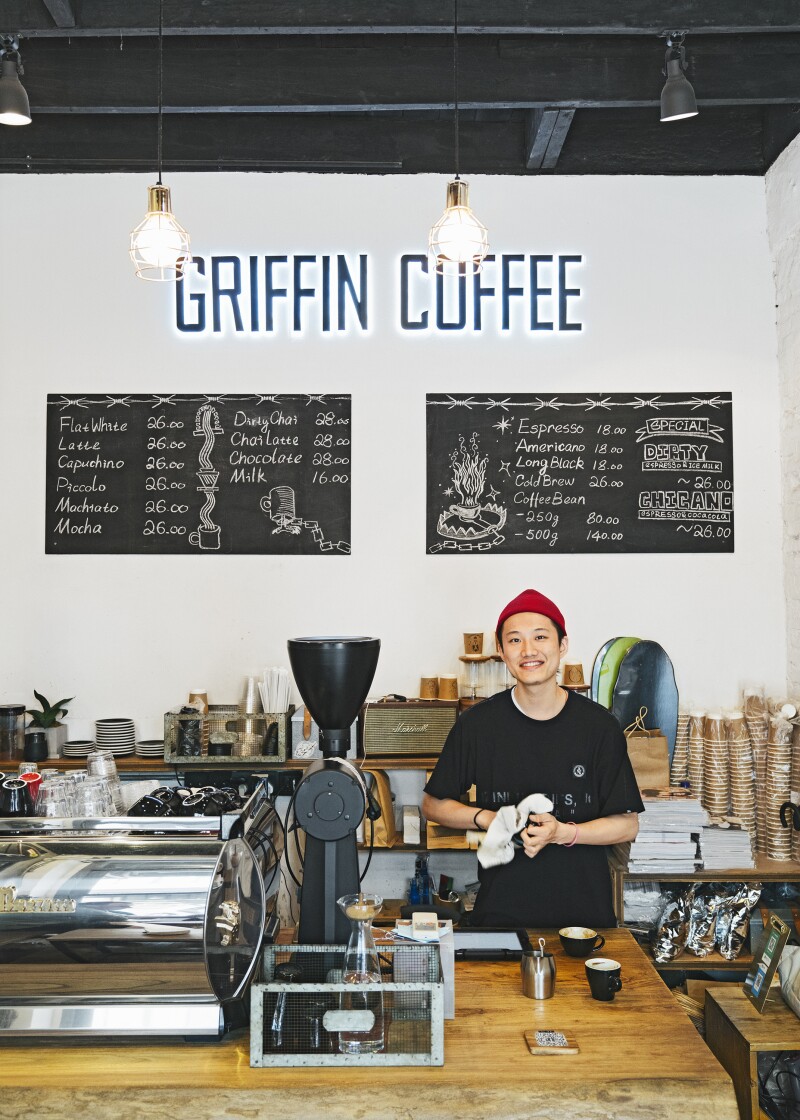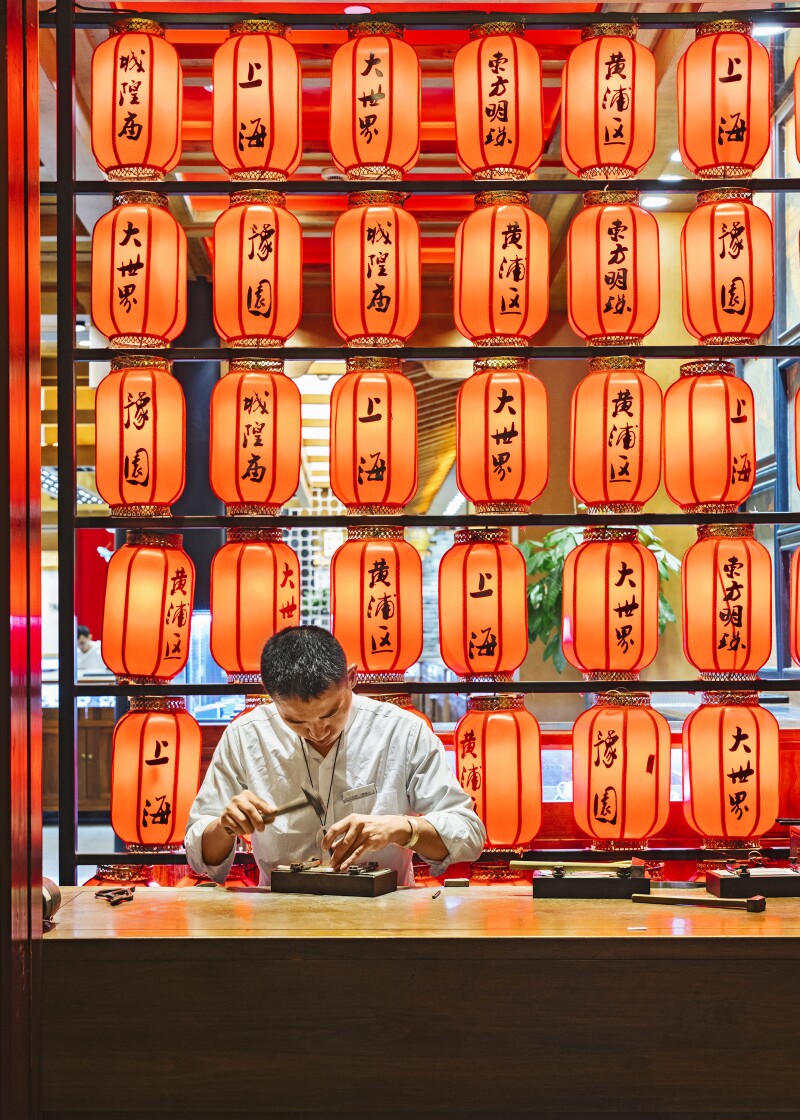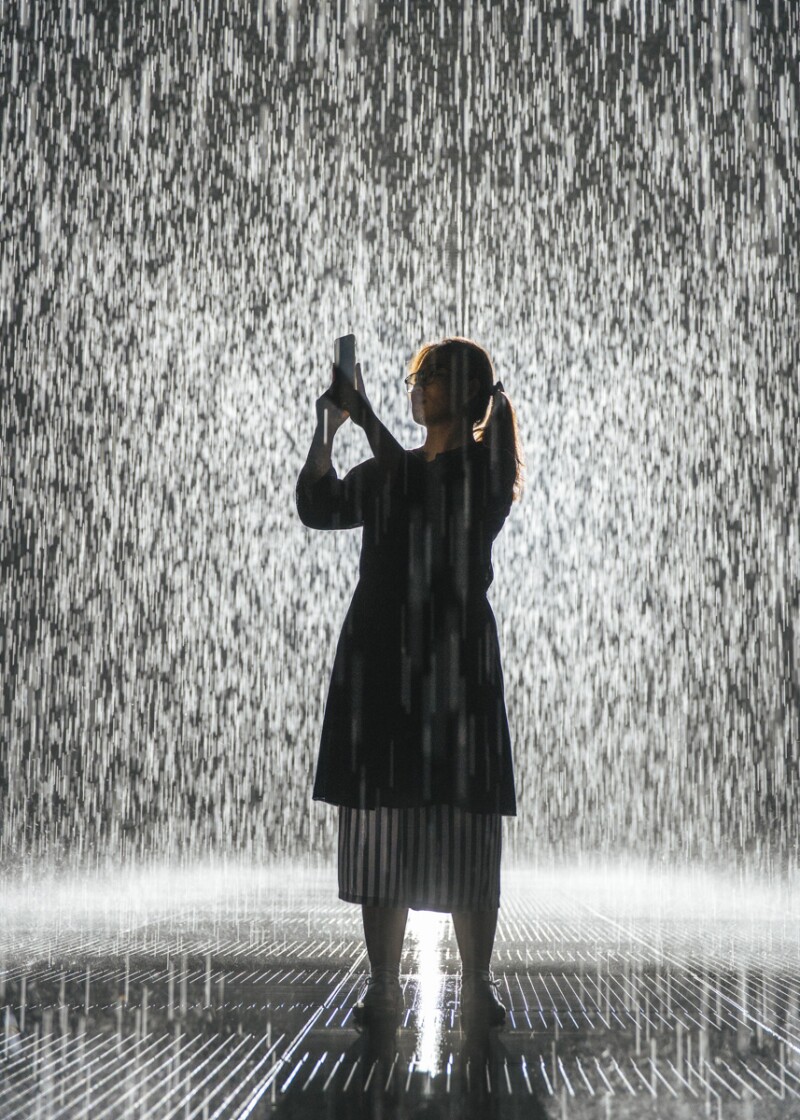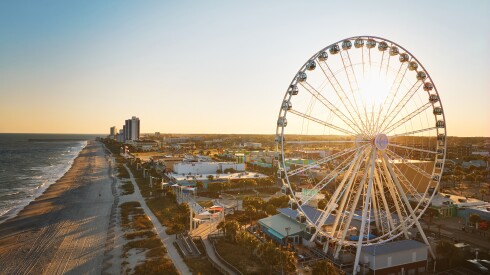In Shanghai, a restaurant open for 10 years is considered old, and a house that’s been standing for 30 is practically a landmark. “Everything here is fast,” says Wayne Zheng, director of guest experience at the Middle House, a sleek boutique hotel that opened in April 2018. Zheng was born in Shanghai and has seen changes come fast and furious. But as the city hustles forward, the latest change is about looking back.
For years, the trend in hospitality was toward large, glitzy restaurants, bars, and brands from abroad. Along the lively, neon-lit strip of Huangpu River waterfront known as the Bund, you could partake in an English-style afternoon tea and dance all night at North American–inspired nightclubs. The opening of a hotel such as the Middle House, in the central Jing’an district, signifies a shift to a more focused, locally sourced kind of creativity. “People are looking for small places, newly open, that have unique features, or some specialty,” Zheng explains. “They are looking for relaxation after work, gathering for something more intimate and also more engaging. It’s not about fancy foods or a fancy environment anymore; they’re seeking a place for small talk and more privacy.”
That trend is showing up in the structure of the city itself. “Ten years ago, the city kept building up stuff—higher buildings, wider roads,” Zheng says. “Now that’s changing. In neighborhoods like Longhua, they’re not tearing up every single thing that’s old and replacing it. They keep the old essence as a part of the new, so some of the history and culture is still there.”
Here are Zheng’s favorite neighborhoods for discovering Shanghai’s marvelous mix.

Residents and retailers find a home in Jing’an, a business district in central Shanghai.
Photo by Algridas Bakas
Yongkang Road/Jing’an District
Named after a historic Buddhist temple that still exists today, the Jing’an business district in central Shanghai is a busy mix of commerce, history, and green space. And Yongkang Road is one of its most vibrant streets. “You can see a lot of local culture here, especially with the older people, who pull their chairs into the alleys and sit down with a teapot, just chatting,” Zheng says. “That’s the everyday routine.” Once a market street, Yongkang was known in recent years for its rowdy expat bars. After 2016, when local authorities stepped in and closed several of the most notorious spots, the street transitioned into the quieter, more elegant place visitors find today. “Yongkang Road reflects the cultural essence of Shanghai, because it’s mixed,” Zheng says. “You have someone’s grandpa living inside the building, and at the same time you have fancy restaurants and bars opening just beneath their windows.” Griffin Coffee
“If you don’t know where to look, you’ll miss this café. It’s a small place tucked between bigger buildings. I love the coffee and the industrial design—there are huge mountain bikes and tool kits hanging on the wall. My favorite is the Americano. I go on my day off, and if it’s a sunny day, I sit by the window drinking my coffee.”
Ferguson Lane
“Walking in is like visiting someone’s old-timey villa, which is what it used to be: Diplomats and governors stayed here [in the 1920s]. Later, the villa was divided into apartments, so you might have ten people living there at the same time, sharing one kitchen and one toilet. Now it’s full of fancy restaurants and bars like Franck Bistro, a French restaurant with indoor and outdoor dining areas. The owners kept the old Shanghai style—red brick walls, the tile roof on the top of the building, the old-fashioned wooden door in the entrance. I love the environment, the history of the building. It’s something special.”

At Griffin Coffee in Jing’an, Zheng recommends the Caffè Americano.
Photo by Algridas Bakas
A Niang Mian
“This little restaurant is on the first floor of an apartment building. It was part of a home; even the bowls and chopsticks are just like the ones you’d find in someone’s house. The auntie—we all call her auntie—opened the place on her own. My favorite dish is the yellowfish noodles: fish broth and wheat noodles, plus bits of fish with a little soy sauce. These are Suzhou-style noodles; it’s hard to find the dish in other places. The restaurant also has a lot of side dishes: fried pork, soy sauce, salted vegetables. I usually go later in the evening, and still have to wait in line sometimes, because it’s really small and they don’t have many seats.” Shanghai Propaganda Poster Art Centre
“When I was a child, we still really admired Chairman Mao. There were a lot of paintings saying that Chairman Mao is the greatest person in history. Those are the kind of old propaganda posters they show here. The center also has old advertisements, and content about old, harsher times in China, about our dark history and the Cultural Revolution. I think it’s something unique.”
Old Town
This formerly walled-in part of the city is where Shanghai commerce began. The first bank, teahouse, and jewelry store opened here nearly 700 years ago. It’s also where Zheng lived when he was a child, back when the neighborhood was known as Nanshi. “I can still remember how all the neighbors used to light up the coal stoves to cook their dinner in the alley at the same time,” Zheng says. The city has preserved most of the original architecture—even the pagoda-style tile and intricate stonework of the entrance gates—and outdoor spaces, including the Yu Garden built during the Ming dynasty.
Deda Coffee
“This is a really famous Chinese brand that serves Western food like borscht and fried pork chops. Years ago, for a local to go to this restaurant meant either that they were rich or had really good taste. People went there to show off. Now it’s full of old Shanghainese guys. They wear suits and watches from famous Chinese brands, and they typically go to these kinds of restaurants with their families for coffee. It’s nostalgic.”

You can purchase customized silver necklaces and rings at the Shanghai Folk Custom Market.
Photo by Algridas Bakas
Shanghai Folk Custom Market
“The market is on the first floor of the Antiques Market of Shanghai Old Town. When you walk inside, it feels like old China. The staff dress in Chinese style, with white shirts and silk pants. They have antiques and a lot of Chinese gifts, and they’ll customize silver necklaces and rings for you.” 265 Fangbang Middle Road Yu Garden
“There are a lot of gardens in Shanghai. Yu Garden is one of the most famous old gardens. Built in the Ming dynasty, it’s more than the size of three football fields. We have a tradition that, during the Chinese New Year, we pay a visit to Yu Garden and walk across the Zigzag Bridge. The bridge has nine turns that you have to follow, because it means fortune, luck, and health for all the family members.”

The Yuz Museum shows contemporary art by local and international artists.
Photo by Algridas Bakas
Longhua
Located on the banks of the Huangpu River, Longhua is one of the city’s emerging cultural districts. “In Longhua, they’ve torn up the old houses and made a really nice modern neighborhood, with museums and a big path next to the river where you can run and bike,” Zheng says. Longhua also contains a skateboard park, and every October hosts the massive Storm Festival, a two-day event devoted to electronic dance music. Despite the modern look, the neighborhood has retained evidence of its past as a port. From the riverfront path, you can see the remnants of an old shipbuilding factory. “Everything is mixed here: new museums, old factories, and a temple that’s even older,” Zheng says.
Yuz Museum
“This used to be a hangar where airplanes were stored during the Second Sino-Japanese War. The museum shows contemporary art by local and international artists like Qin Yifeng and Joshua Nathanson. It’s owned by a Chinese Indonesian collector who wants to show art in this unusual setting. I think he’s trying to build a culture, to help Chinese people to see more art. Part of the purpose of visiting this museum is to see how the building looked in the old days. It’s a contradiction, with the modern art inside.”

Climbing the tower of the Longhua Temple is a local cultural tradition.
Photo by Algridas Bakas
Long Museum
“The museum primarily shows sculptural art. Inside there’s a coffee shop called the Café du Dragon. After seeing an exhibition, you can spend a whole afternoon drinking coffee by the river and people-watching. In the summer, the Long is cooler than other places along the river as well, thanks to the concrete design. I’ve been there several times just for coffee, not even for an exhibit.” Longhua Temple
“With giant halls and a pagoda, the Longhua Temple is a well-preserved example of imperial Chinese architecture. Some people believe that climbing the tower means their career is going to advance very quickly. It’s one of the local cultural traditions. If you climb the tower, you’re going to get a better salary, you’re going to get promoted.”
>>Next: Vanguard 2017: Glen Fu and Zoey Zuo, Founders of 54Traveler











